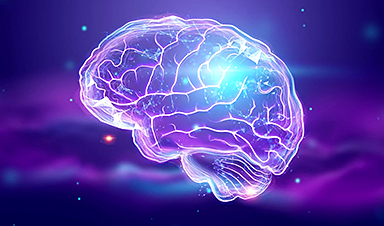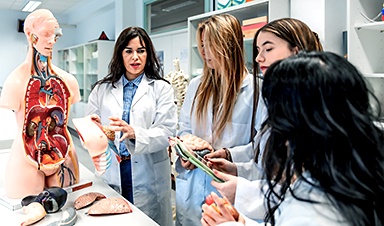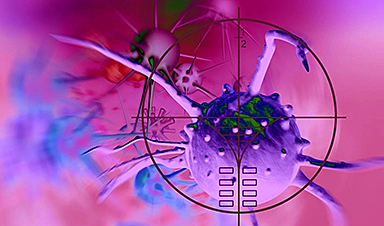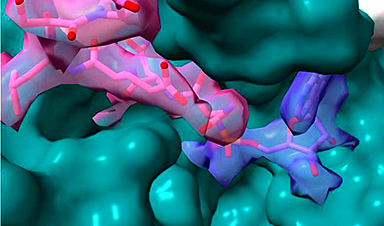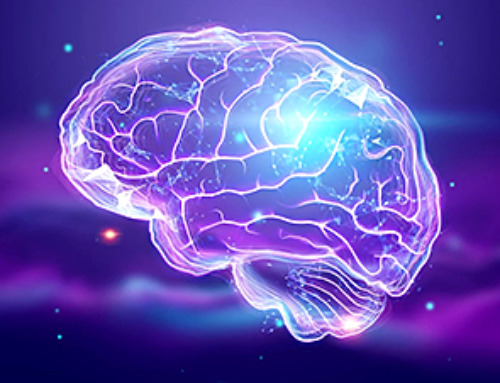Highlighting the absence of evidence for the controllability of AI, Dr. Yampolskiy warns of the existential risks involved and advocates for a cautious approach to AI development, with a focus on safety and risk minimization.
There is no current evidence that AI can be controlled safely, according to an extensive review, and without proof that AI can be controlled, it should not be developed, a researcher warns.
Despite the recognition that the problem of AI control may be one of the most important problems facing humanity, it remains poorly understood, poorly defined, and poorly researched, Dr. Roman V. Yampolskiy explains.
In his upcoming book, AI: Unexplainable, Unpredictable, Uncontrollable, AI Safety expert Dr. Yampolskiy looks at the ways that AI has the potential to dramatically reshape society, not always to our advantage.
He explains: “We are facing an almost guaranteed event with the potential to cause an existential catastrophe. No wonder many consider this to be the most important problem humanity has ever faced. The outcome could be prosperity or extinction, and the fate of the universe hangs in the balance.”
Uncontrollable superintelligence
Dr. Yampolskiy has carried out an extensive review of AI scientific literature and states he has found no proof that AI can be safely controlled – and even if there are some partial controls, they would not be enough.
He explains: “Why do so many researchers assume that AI control problem is solvable? To the best of our knowledge, there is no evidence for that, no proof. Before embarking on a quest to build a controlled AI, it is important to show that the problem is solvable.
“This, combined with statistics that show the development of AI superintelligence is an almost guaranteed event, shows we should be supporting a significant AI safety effort.”
He argues our ability to produce intelligent software far outstrips our ability to control or even verify it. After a comprehensive literature review, he suggests advanced intelligent systems can never be fully controllable and so will always present a certain level of risk regardless of the benefit they provide. He believes it should be the goal of the AI community to minimize such risk while maximizing potential benefits.
What are the obstacles?
AI (and superintelligence), differ from other programs by its ability to learn new behaviors, adjust its performance, and act semi-autonomously in novel situations.
One issue with making AI ‘safe’ is that the possible decisions and failures by a superintelligent being as it becomes more capable is infinite, so there are an infinite number of safety issues. Simply predicting the issues not be possible and mitigating against them in security patches may not be enough.
At the same time, Yampolskiy explains, AI cannot explain what it has decided, and/or we cannot understand the explanation given as humans are not smart enough to understand the concepts implemented. If we do not understand AI’s decisions and we only have a ‘black box’, we cannot understand the problem and reduce the likelihood of future accidents.
For example, AI systems are already being tasked with making decisions in healthcare, investing, employment, banking and security, to name a few. Such systems should be able to explain how they arrived at their decisions, particularly to show that they are bias-free.
Yampolskiy explains: “If we grow accustomed to accepting AI’s answers without an explanation, essentially treating it as an Oracle system, we would not be able to tell if it begins providing wrong or manipulative answers.”
Controlling the uncontrollable
As the capability of AI increases, its autonomy also increases but our control over it decreases, Yampolskiy explains, and increased autonomy is synonymous with decreased safety.
For example, for superintelligence to avoid acquiring inaccurate knowledge and remove all bias from its programmers, it could ignore all such knowledge and rediscover/proof everything from scratch, but that would also remove any pro-human bias.
“Less intelligent agents (people) can’t permanently control more intelligent agents (ASIs). This is not because we may fail to find a safe design for superintelligence in the vast space of all possible designs, it is because no such design is possible, it doesn’t exist. Superintelligence is not rebelling, it is uncontrollable to begin with,” he explains.
“Humanity is facing a choice, do we become like babies, taken care of but not in control or do we reject having a helpful guardian but remain in charge and free.”
He suggests that an equilibrium point could be found at which we sacrifice some capability in return for some control, at the cost of providing system with a certain degree of autonomy.
Aligning human values
One control suggestion is to design a machine that precisely follows human orders, but Yampolskiy points out the potential for conflicting orders, misinterpretation or malicious use.
He explains: “Humans in control can result in contradictory or explicitly malevolent orders, while AI in control means that humans are not.”
If AI acted more as an advisor it could bypass issues with misinterpretation of direct orders and potential for malevolent orders, but the author argues for AI to be a useful advisor it must have its own superior values.
“Most AI safety researchers are looking for a way to align future superintelligence to the values of humanity. Value-aligned AI will be biased by definition, pro-human bias, good or bad is still a bias. The paradox of value-aligned AI is that a person explicitly ordering an AI system to do something may get a “no” while the system tries to do what the person actually wants. Humanity is either protected or respected, but not both,” he explains.
Minimizing risk
To minimize the risk of AI, he says it needs it to be modifiable with ‘undo’ options, limitable, transparent, and easy to understand in human language.
He suggests all AI should be categorized as controllable or uncontrollable, and nothing should be taken off the table and limited moratoriums, and even partial bans on certain types of AI technology should be considered.
Instead of being discouraged, he says: “Rather it is a reason, for more people, to dig deeper and to increase effort, and funding for AI Safety and Security research. We may not ever get to 100% safe AI, but we can make AI safer in proportion to our efforts, which is a lot better than doing nothing. We need to use this opportunity wisely.”
News
New Once-a-Week Shot Promises Life-Changing Relief for Parkinson’s Patients
A once-a-week shot from Australian scientists could spare people with Parkinson’s the grind of taking pills several times a day. The tiny, biodegradable gel sits under the skin and releases steady doses of two [...]
Weekly injectable drug offers hope for Parkinson’s patients
A new weekly injectable drug could transform the lives of more than eight million people living with Parkinson's disease, potentially replacing the need for multiple daily tablets. Scientists from the University of South Australia [...]
Most Plastic in the Ocean Is Invisible—And Deadly
Nanoplastics—particles smaller than a human hair—can pass through cell walls and enter the food web. New research suggest 27 million metric tons of nanoplastics are spread across just the top layer of the North [...]
Repurposed drugs could calm the immune system’s response to nanomedicine
An international study led by researchers at the University of Colorado Anschutz Medical Campus has identified a promising strategy to enhance the safety of nanomedicines, advanced therapies often used in cancer and vaccine treatments, [...]
Nano-Enhanced Hydrogel Strategies for Cartilage Repair
A recent article in Engineering describes the development of a protein-based nanocomposite hydrogel designed to deliver two therapeutic agents—dexamethasone (Dex) and kartogenin (KGN)—to support cartilage repair. The hydrogel is engineered to modulate immune responses and promote [...]
New Cancer Drug Blocks Tumors Without Debilitating Side Effects
A new drug targets RAS-PI3Kα pathways without harmful side effects. It was developed using high-performance computing and AI. A new cancer drug candidate, developed through a collaboration between Lawrence Livermore National Laboratory (LLNL), BridgeBio Oncology [...]
Scientists Are Pretty Close to Replicating the First Thing That Ever Lived
For 400 million years, a leading hypothesis claims, Earth was an “RNA World,” meaning that life must’ve first replicated from RNA before the arrival of proteins and DNA. Unfortunately, scientists have failed to find [...]
Why ‘Peniaphobia’ Is Exploding Among Young People (And Why We Should Be Concerned)
An insidious illness is taking hold among a growing proportion of young people. Little known to the general public, peniaphobia—the fear of becoming poor—is gaining ground among teens and young adults. Discover the causes [...]
Team finds flawed data in recent study relevant to coronavirus antiviral development
The COVID pandemic illustrated how urgently we need antiviral medications capable of treating coronavirus infections. To aid this effort, researchers quickly homed in on part of SARS-CoV-2's molecular structure known as the NiRAN domain—an [...]
Drug-Coated Neural Implants Reduce Immune Rejection
Summary: A new study shows that coating neural prosthetic implants with the anti-inflammatory drug dexamethasone helps reduce the body’s immune response and scar tissue formation. This strategy enhances the long-term performance and stability of electrodes [...]
Scientists discover cancer-fighting bacteria that ‘soak up’ forever chemicals in the body
A family of healthy bacteria may help 'soak up' toxic forever chemicals in the body, warding off their cancerous effects. Forever chemicals, also known as PFAS (per- and polyfluoroalkyl substances), are toxic chemicals that [...]
Johns Hopkins Researchers Uncover a New Way To Kill Cancer Cells
A new study reveals that blocking ribosomal RNA production rewires cancer cell behavior and could help treat genetically unstable tumors. Researchers at the Johns Hopkins Kimmel Cancer Center and the Department of Radiation Oncology and Molecular [...]
AI matches doctors in mapping lung tumors for radiation therapy
In radiation therapy, precision can save lives. Oncologists must carefully map the size and location of a tumor before delivering high-dose radiation to destroy cancer cells while sparing healthy tissue. But this process, called [...]
Scientists Finally “See” Key Protein That Controls Inflammation
Researchers used advanced microscopy to uncover important protein structures. For the first time, two important protein structures in the human body are being visualized, thanks in part to cutting-edge technology at the University of [...]
AI tool detects 9 types of dementia from a single brain scan
Mayo Clinic researchers have developed a new artificial intelligence (AI) tool that helps clinicians identify brain activity patterns linked to nine types of dementia, including Alzheimer's disease, using a single, widely available scan—a transformative [...]
Is plastic packaging putting more than just food on your plate?
New research reveals that common food packaging and utensils can shed microscopic plastics into our food, prompting urgent calls for stricter testing and updated regulations to protect public health. Beyond microplastics: The analysis intentionally [...]


